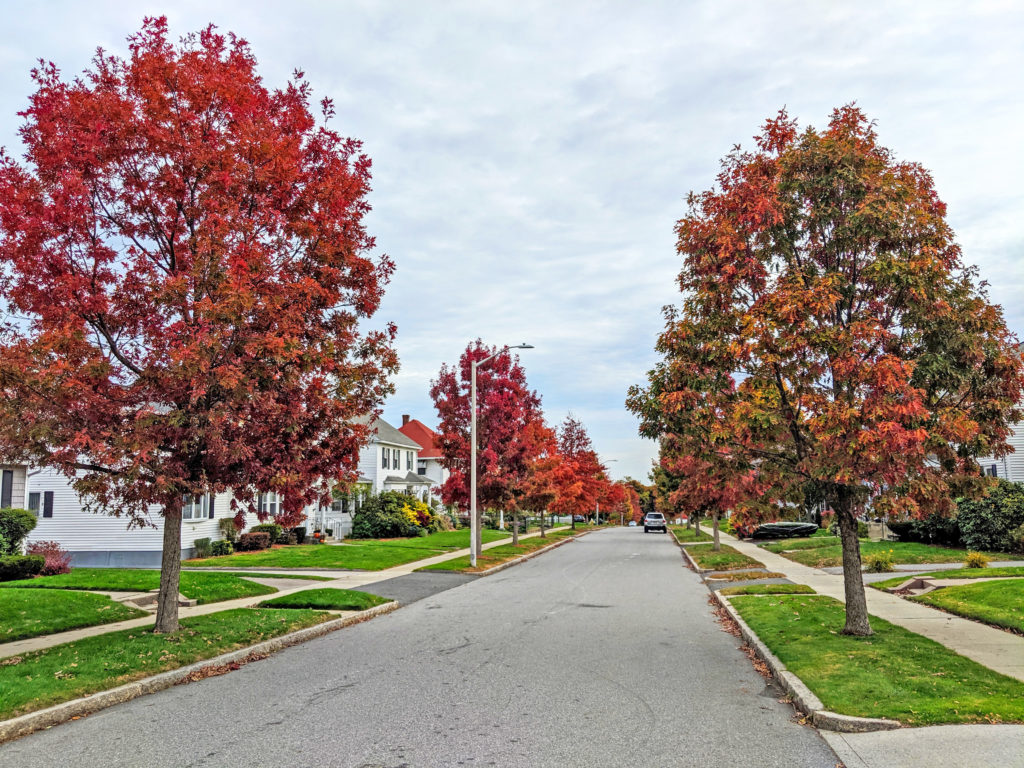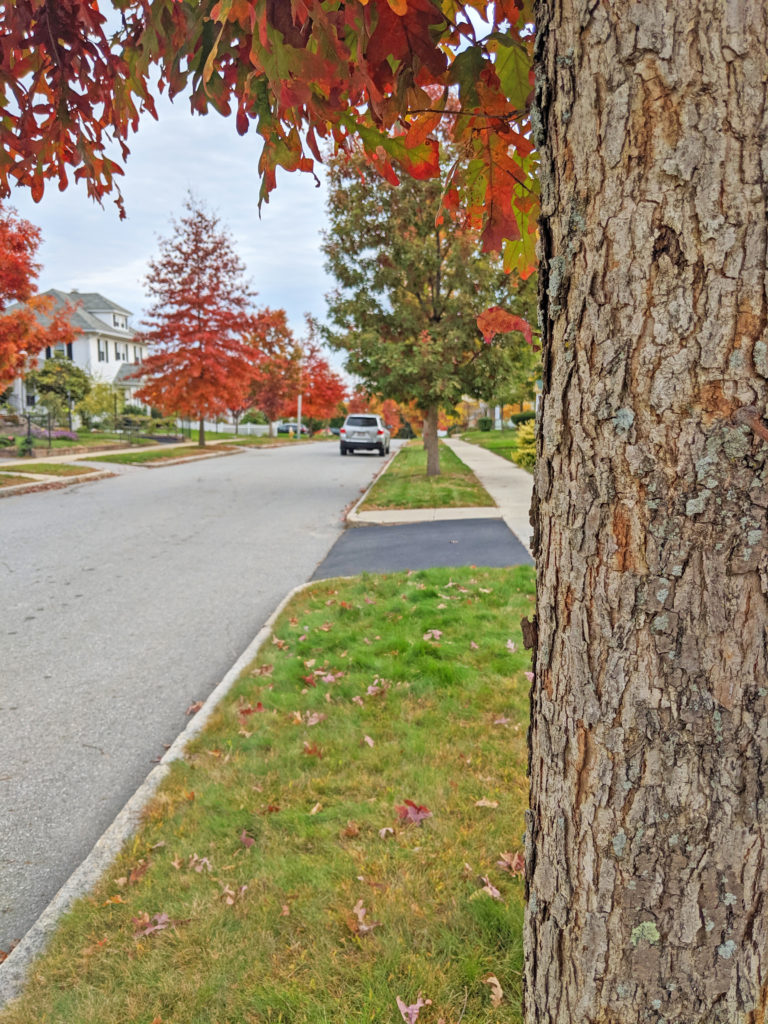
By Derek Lirange
Every fall thousands of people come to New England to see the trees do their magical performance of changing colors before shedding their leaves for the winter. While our forested hillsides and mountains are beautiful any time of year, there is perhaps no time more iconic for our landscape than this. One particularly magical experience is passing through a tunnel of trees, branches laced together from two sides of a road, while you are showered with colorful leaves in the breeze. This sort of a scene probably conjures images of rural landscapes, old farms lined by trees. Living and working in Worcester I’m also familiar with many of the neighborhoods throughout this fair city, where scenes just like the ones I’ve described play out each fall. But one neighborhood was stripped of that glory just over 10 years ago.
The October of 2008 was the last time anyone in the Burncoat and Greendale neighborhoods would walk down through the tunnels of tree boughs arching over their street for a generation. The trees their did their magic, went dormant for winter, and most did not see the spring thaw. They were cut down, chipped to pieces, and hauled away without ceremony.
 These trees were infested, though they may not have shown it in their full canopies. The Asian Longhorned Beetle (ALB) is an invasive insect from eastern Asia which feasts on maples, among other things. After many generations legions of these pests had spread throughout the neighborhood and beyond, riddling the maple trees with holes. These beetles eat their way into the heart of the tree, rest for the winter, protected inside their host, and then chew a new exit out as adults to make the next generation which repeats the cycle. While this won’t kill the tree immediately, if left unchecked it leaves the tree open to secondary infestations and compromises its strength making it more likely to break in a storm or under a load of snow and ice. It also makes the trees economically useless if you’re growing them for lumber or maple sugaring. For all of these reasons these beetles have to be eradicated from the landscape. In Worcester the first hitchhiking beetles likely arrived in the mid 1990s inside wooden packing materials. When they emerged, they found a sort of paradise, a land of plenty where they went unhindered by predators for years.
These trees were infested, though they may not have shown it in their full canopies. The Asian Longhorned Beetle (ALB) is an invasive insect from eastern Asia which feasts on maples, among other things. After many generations legions of these pests had spread throughout the neighborhood and beyond, riddling the maple trees with holes. These beetles eat their way into the heart of the tree, rest for the winter, protected inside their host, and then chew a new exit out as adults to make the next generation which repeats the cycle. While this won’t kill the tree immediately, if left unchecked it leaves the tree open to secondary infestations and compromises its strength making it more likely to break in a storm or under a load of snow and ice. It also makes the trees economically useless if you’re growing them for lumber or maple sugaring. For all of these reasons these beetles have to be eradicated from the landscape. In Worcester the first hitchhiking beetles likely arrived in the mid 1990s inside wooden packing materials. When they emerged, they found a sort of paradise, a land of plenty where they went unhindered by predators for years.
That ended when the beetles were discovered by a concerned Worcester resident in August 2008. She found out that the federal government was asking anyone who saw the beetle to report it, so that’s what she did. That’s when the troops were sent in and, out of necessity, the face of the Burncoat Neighborhood was completely changed. To ensure that the beetle and any larvae are killed the trees have to be cut down and chipped up. You can’t risk leaving the tree standing and leaving a larvae inside to emerge and restart the problem all over again. And so it came to be that by spring of 2009, there were scarcely any street trees left. By the fall the replanting had begun but the replacements, while welcome relief, couldn’t fill the holes left by the nearly 60-year-old specimens that had been lost. In the fall, their colors changed, but each tree was its own pom-pom of yellows, and reds their branches barely even reaching to the sidewalk. This was the future forest, and it was a bittersweet sight.
It has been 10 years since that fall, and finally there is a sense of real progress; the trees no longer look or give the impression of newness. Some of the trees which started with trunks measuring 2 inches in diameter, are measuring over 9 inches now. One massive Tuliptree on Coventry Road already has reached 11 inches of girth, nearly an inch a year since it was planted! The trees are starting to overtake lamp posts and rooftops, standing at heights over 30 feet. Someday soon the arms and fingers of oaks and tulip trees, lindens and zelkovas, will reach out over the road to touch one another restoring the tunnels for the coming generation.
It is said that planting a tree is a gift to the next generation because only they will get to see the tree in all its splendor. And that was certainly the hope for the trees planted throughout the Burncoat and Greendale neighborhoods, to restore the neighborhood for the next generation. But, it seems fair to say that seeing the trees looking so large and grand now feels like that hope is being fulfilled in our lifetime.
Derek Lirange is a community forester for New England Botanic Garden at Tower Hill.
